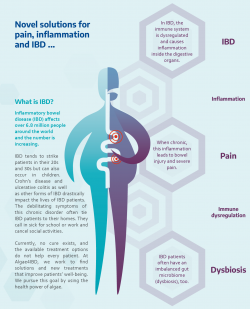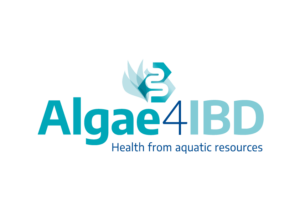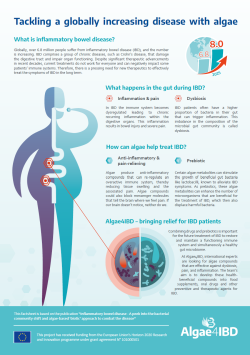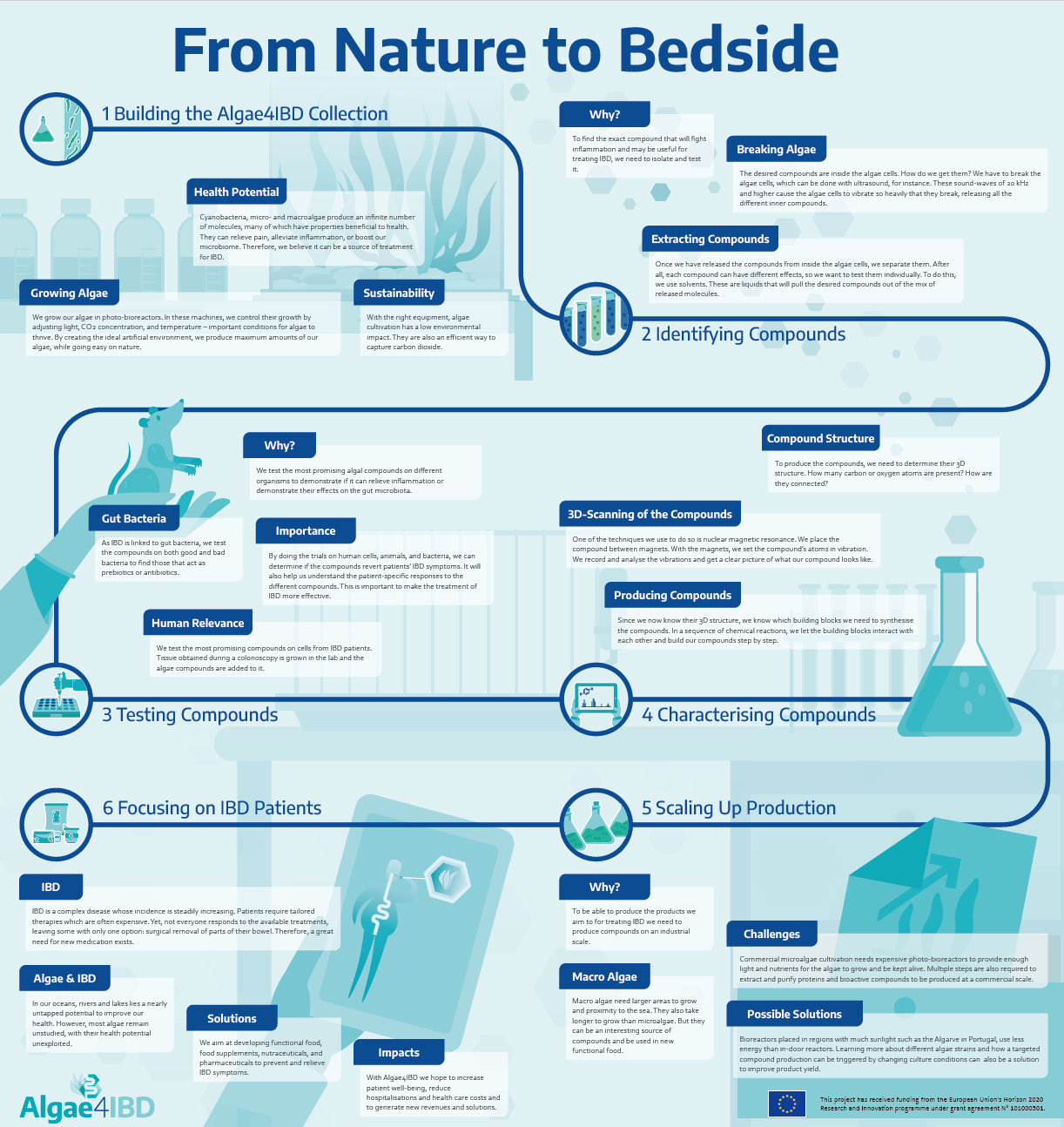Looking for graphics, brochures, or the latest scientific papers on inflammatory bowel disease and the health potential of algae published by Algae4IBD? Then you have come to the right corner!
All documents published in the media library can be used freely, provided that the sources and authors are acknowledged.
Media material
about algae's health potential and using it to treat inflammatory bowel disease
Scientific publications
on the health potential of algae for inflammatory bowel disease and more
Mélanie Silva, et al. (2024) Molecules, 29 (8), 1900
Compiles existing knowledge and research findings of the potential pharmacological and biological uses of marine algae and/or their compound.
Bettina Ughy et al. (2023) Cells 2023, 12(10), 1430
Inoculations with serial dilutions of stationary populations reveal a so-called minimal stationary cell concentration (MSCC) point, up to which the cell concentrations remain constant upon dilutions; that seems to be universal among unicellular organisms.
Yahav Eilam et al. (2023) Global Challenges, 2200177 (24)
The main emphasis of this review is on the potential health-promoting applications of microalgae-based proteins, peptides, and bioactive substances for IBD and NAFLD.
Elsinraju Devadasu et al. (2023) Front. Plant Sci., (14)
Low-temperature and time-resolved fluorescence spectroscopy indicated that the stt7 mutant was more sensitive to salt stress, suggesting that LHCII phosphorylation has a role in the acclimation and protection of the photosynthetic apparatus.
Davide Liberti, et al. (2023) Antioxidants, 12 (2), 337
Studies the the biologicalactivities of sulfated exopolysaccarides and purified phycoerythrin to determine if extraction techniques affect their bio-activities.
Davide Liberti, et al. (2022) ACS Sustainable Chem Eng, 2023, 11, 1, 381–389
The marine, red algae Porphyridium cruentum produces high-value compounds such as exopolysaccharides, phycoerythrin, β-carotene and fatty acids. The paper describes a new biorefinery process to isolate these compounds in a sequential process.
Summarizes the latest findings on bioactive compounds from algae and edible mushrooms that affect the synthesis and metabolism of cholesterol and its role in diseases such as non-alcoholic fatty liver disease.
Viswanath Kiron, et al. (2022) Trends Food Sci Tech, 129, 210 – 220
Gives an overview of IBD and its associated microbes. It provides insight into the potential of probiotic bacteria and prebiotics from micro- and macroalgae to combat IBD.
Investigated the sensitivity of non-bilayer lipid phases of isolated thylakoid membranes to different lipases and proteases.
Mélanie Silva et al. (2022) Appl Sci, 12 (12), 5877
This study describes the identification of four microalgae as potentially valuable sources of antioxidant and anti-inflammatory compounds for use in the functional food and pharmaceuticals.
Scientific posters
Deliverables
This collection lists 1104 algae strains (macroalgae, microalgae and cyanobacteria) chosen specifically for the Algae4IBD project from the strain collections of the partners involved in the project.
The master plan lays out the different strategies for communication and dissemination of Algae4IBD results. It also describes the strategies for engaging relevant stakeholders.
You didn‘t find what you are looking for or have any questions? Please, contact our project or communication managers!





